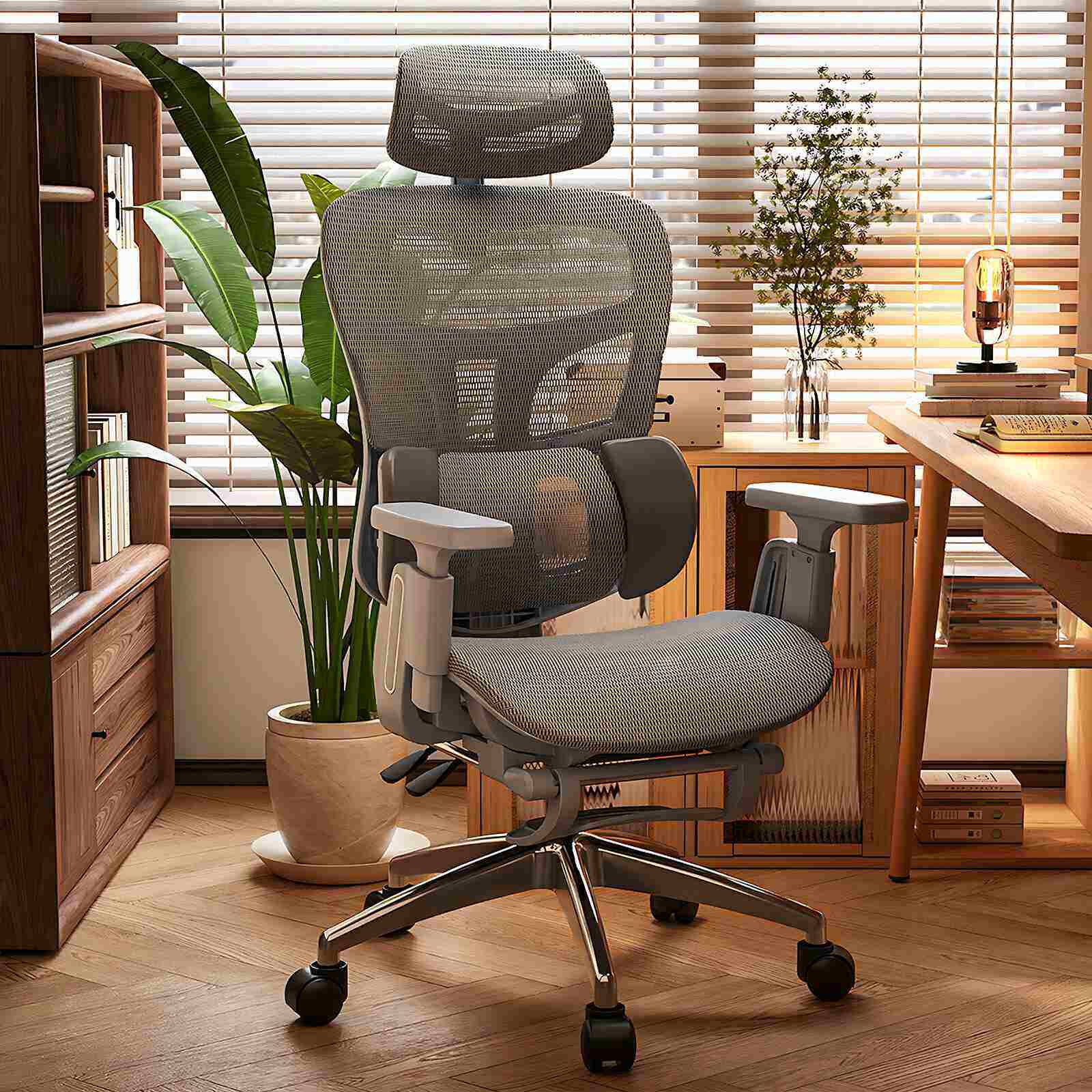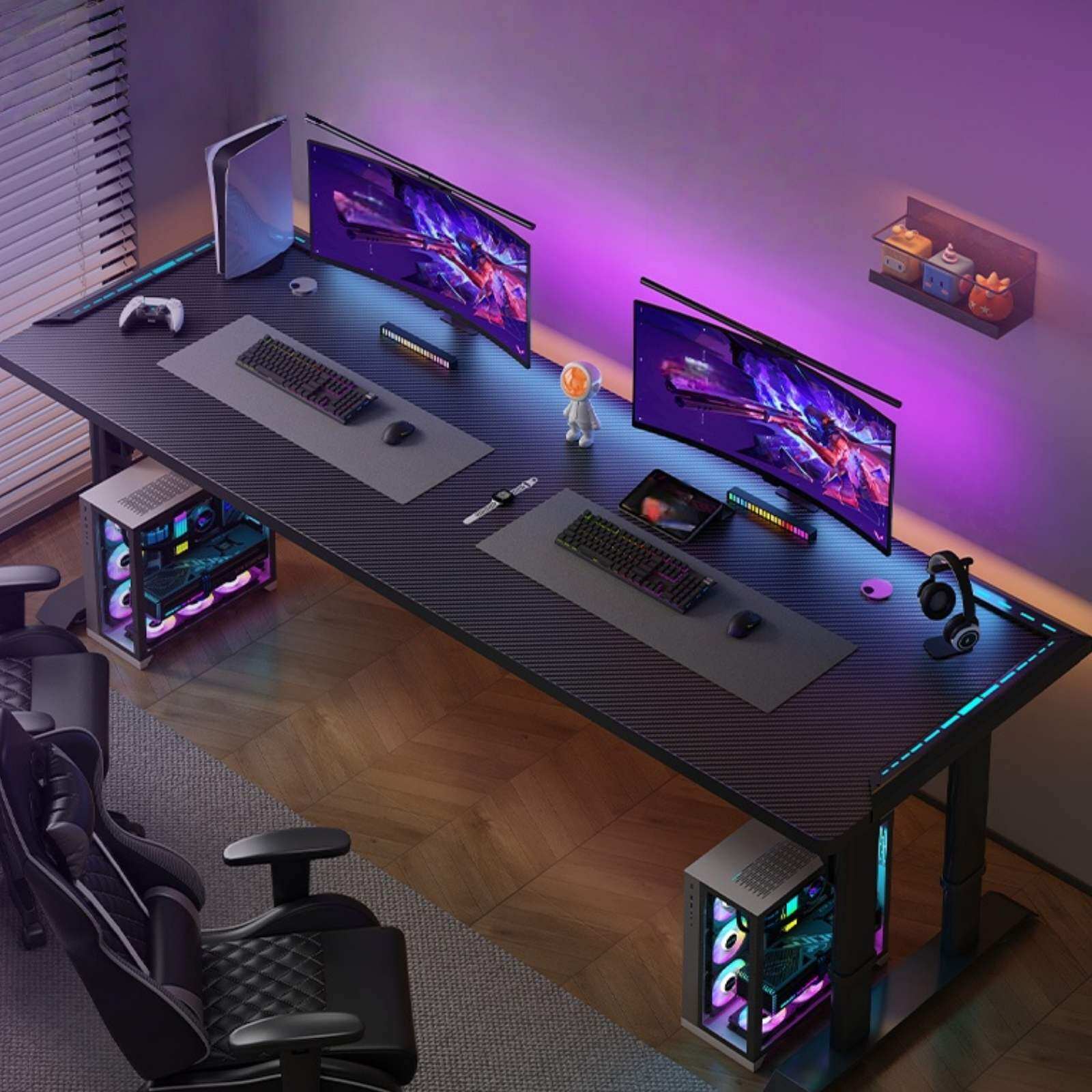In the fast-paced world of modern life, a suitable desk is crucial for improving work and study efficiency.
Whether you're a student, office worker, or freelancer, choosing a desk that suits your needs not only improves your work and study efficiency but also increases comfort.
This article will explore in detail how to choose a desk that's right for you from four perspectives: material, dimensions, functional design, and style.
1. Choosing the Right Material
The material of a desk directly impacts its durability, aesthetics, and price.
Common desk materials include solid wood, steel and wood, glass, and artificial boards.
Each material has its own unique advantages and disadvantages, and the choice should be based on your specific needs.
1. Solid Wood Desks
Solid wood desks have a natural texture and warmth, are very durable, and are environmentally friendly.
Solid wood desks are generally stable, resist deformation, and are suitable for long-term use.
However, solid wood desks are relatively expensive and have high environmental requirements; they should not be placed in excessively humid or dry areas.
Solid wood desks require regular maintenance to maintain their luster and extend their lifespan.
2. Steel-Wood Desks
Steel-wood desks combine the sturdiness of steel with the comfort of wood, making them a cost-effective option.
These desks typically feature steel legs and a wood tabletop, creating a sturdy yet aesthetically pleasing design.
Steel-wood desks are suitable for those who frequently move and adjust their desks, as the steel structure is more stable and less prone to wobbling.
3. Glass Desks
Glass desks offer a modern and stylish look, with a high degree of transparency that enhances the visual impact of any space.
Glass desks are fireproof, stain-resistant, and wear-resistant, but they are susceptible to fingerprints and water stains and require frequent cleaning.
Also, glass is relatively fragile and requires careful protection from impacts and heavy objects.
4. Artificial Wood Desks
Artificial wood desks, such as density fiberboard and particleboard, are relatively inexpensive and come in a variety of styles, making them suitable for those on a budget.
However, these desks are less durable and environmentally friendly, and may warp and age over time.
Therefore, when purchasing, pay attention to its environmental rating and the materials used.
2. Determine the Right Size
The size of a desk directly affects user comfort and space utilization.
When choosing a desk, consider the user's height, usage habits, and the room's spatial layout.
1. Choose the Height Based on Height
The ideal desk height should allow the user's elbows to form a 90-degree angle with the surface when sitting.
Generally speaking, a desk height of around 75 cm is suitable for adults.
For children, the desk should be adjusted based on the child's height to ensure proper posture.
2. Choose the Length and Width Based on the Space
The length and width of a desk should be determined based on the size of the room and the intended use.
If the space is small, choose a minimalist desk to avoid taking up too much space.
If you need to store a large amount of books and office supplies, it is recommended to choose a desk with storage to better utilize the space.
3. Focus on Functional Design
A modern desk is more than just a simple work surface; it integrates multiple functions to meet the needs of different users.
When choosing a desk, choose one with features tailored to your work habits and needs.
1. Storage
For those who need to store large amounts of books and stationery, a desk with drawers and cabinets is a very practical choice.
These storage spaces help you organize and keep your desk tidy.
Some high-end desks also feature hidden drawers and open shelves for increased storage flexibility.
2. Cable Management
With the increasing number of electronic devices in modern offices, there are also a growing number of cables on the desk.
A desk with cable holes or a cable management system can help you manage clutter and keep your desk neat and tidy.
This not only improves work efficiency but also reduces safety hazards.
3. Adjustable Height
Excessive sitting for extended periods can have adverse effects on your health.
Choose a height-adjustable desk so you can adjust the height to suit your work needs and personal preferences.
Standing while working can help alleviate discomfort caused by sitting and improve work efficiency.
4. Other Features
Some multifunctional desks also incorporate features like bookshelves, makeup mirrors, and even small refrigerators.
These designs maximize the functionality of the desk and are particularly suitable for small households or those seeking multifunctional furniture.
4. Style Matching and Overall Coordination
The style of the desk should coordinate with the overall decor of the room to create a harmonious and unified living environment.
Different styles have different characteristics, and the choice should be based on personal preferences and home style.
1. Modern Minimalist Style
Modern minimalist style desks feature a simple and elegant design with smooth lines and neutral colors such as white, black, and gray.
This style of desk complements minimalist home decor, creating a refreshing and neat feel.
Modern minimalist style desks are not only practical but also enhance the overall quality of the space.
2. Nordic Style
Nordic style desks are known for their natural, simple, and user-friendly design, often featuring light tones and wood accents.
This style of desk is suitable for those who prefer a warm and natural atmosphere, adding a sense of warmth and comfort to the home.
Nordic style desks often combine practicality and aesthetics, making them ideal for home use.
3. Classical Style
Classic-style desks are typically made of solid wood, featuring intricate carvings and exquisite designs.
This style of desk is suitable for homes with traditional decor, creating an elegant and dignified atmosphere.
A classical-style desk is not only a practical piece of furniture, but also a work of art, elevating the cultural quality of the entire space.
4. Industrial Style
Industrial-style desks often utilize metal, combined with wood or glass elements, for a rugged yet distinctive design.
This style of desk (www.bgtc.gd.cn) is suitable for modern young people or those seeking individuality, adding a unique charm to any home.
Industrial-style desks are not only practical but also reflect the owner's unique aesthetic taste.
Choosing the right desk is not only about meeting daily work and study needs; it is also an important step in improving your quality of life.
By considering factors such as material, size, functional design, and style, you can find a desk that is both practical and beautiful, making every session at your desk more enjoyable and productive.
We hope this article will help you make a more informed choice when choosing a desk, creating a more comfortable and productive work and study environment.

 USD
USD
 GBP
GBP
 EUR
EUR

























































